![[Artist's Concept of AXAF]](/images/axmicro.gif)
![[Artist's Concept of AXAF]](/images/axmicro.gif) |
CXO Project Science:
|

There was a TOO of Cyg X-3 on April 5 (Obsid=425). This was done in alternating exposure, graded mode using a subarray and the HETG. Here is the zero order image (all data, all grades).
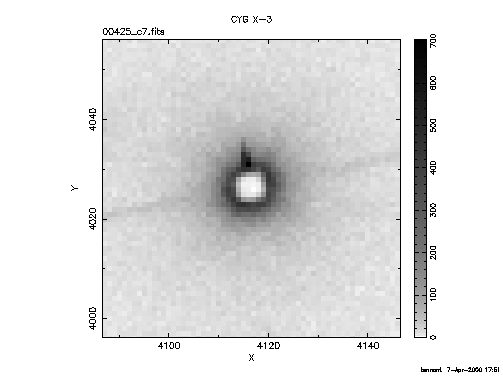
As expected he zero order is highly piled up showing the characteristic donut shape. Also seen is the trailing due to the ACIS readout. Unexpectedly there is a feature sticking out at about right angles to the trailing. Here is a photon scatter plot of the central source.
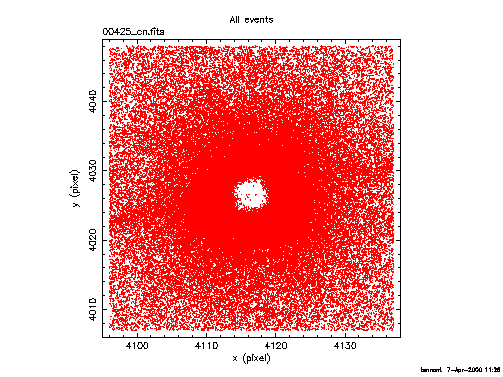
The GIF image does not have the resolution to show the jet-like feature so here is a PostScript file which you are encouraged to download and print (you may not be able to see the jet in a screen previewer due to the lower resolution). The jet feature is very impressive. Here is a close up image showing two regions that I call the jet and anti-jet regions.

As you can see the boxes are 1x2.5 arcsec. Here is the grade spectrum in the anti-jet region.
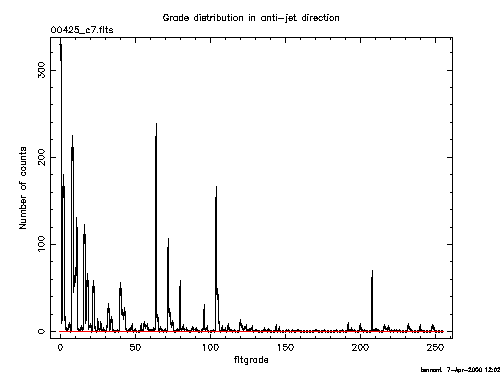
The antijet grade spectrum is fairly typical, in that 0 is the dominant grade and the simple splits (2,8,16,64) are all strong. Here is the grade spectrum of the jet region.
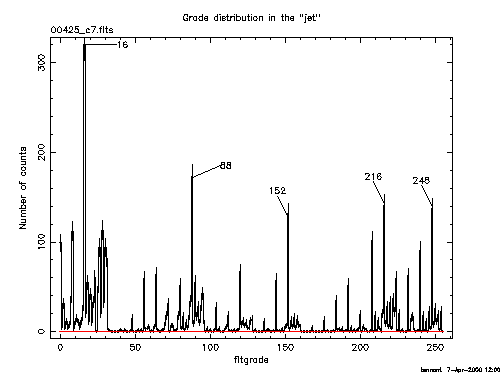
Clearly the grade spectrum is highly distorted. Grade 16 (which is due to the leading pixel on node 1) is dominant. Other dominant grades are 68, 152, 216, 248 which have the common feature that three central horizontal (row) pixels are on. Comparing the energy spectrum in the jet and anti-jet regions shows that the main difference is the PHA less than 200. There are effectively no events in the anti-jet region with PHA less than 200. Here is the low-energy PHA spectrum for the jet region.
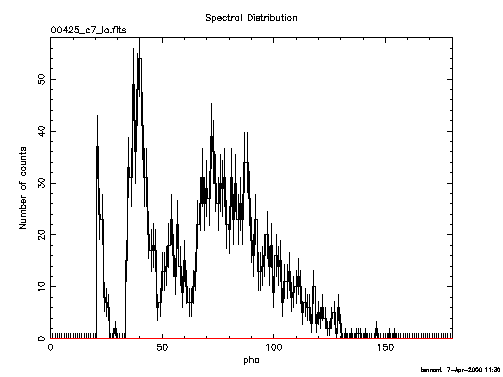
The event threshold for this BI chip is 21, and the split level is 13. Thus for events from 21 to 33 only the PHA from the center pixel is counted. For 34 and above it is possible for one additional pixel to be above the split level. Starting at 47 you can have two pixels above the split level, and at 60 three pixels. Thus this looks like the spectrum that one would obtain from "noisy" data (amusingly this resembles the low energy Jupiter spectrum). Since the interesting features occur at low energy, here is the image in the low energy band.
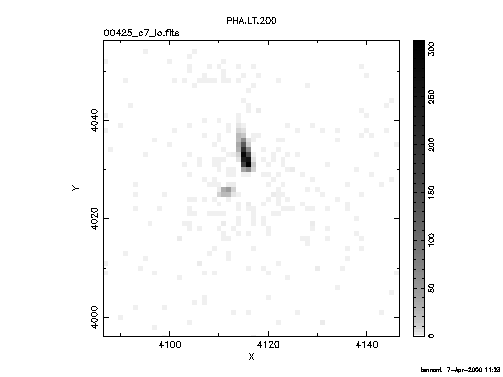
If we look at the data from the short exposure frames only, then we do not see an obvious jet-like feature. Since only one exposure in 9 is short and the integration time is short, the total exposure is very short and so the data are noisy.
I suspect that the jet is caused by serial clocking CTI in the BI chip. I note that in the PHA.LT.200 image above there are two features, and the weaker feature is consistent charge trailed in the parallel clocking direction. The large jet like feature would be trailed in the serial clocked direction (since Cyg X-3 was on node 1).
My experience with the BI chip is that the serial clocked CTI does get worse at lower temperature thus one reason why this might not have been seen before is we are now operating at -120. Concerning the popularity of grade 16, it appears that pixels read out after the Cyg X-3 image have values close to event threshold. Thus if you get a fluctuation above the event threshold, i.e., an event, we would expect on the average that the pixel closer to the source (i.e., the leading pixel) to have more charge than the trailing pixel. Hence more grade 16 events in the trail.
Contact me if you have questions. Since this is a new instrument effect (to me at least) it was written up quickly to get the information out. The serial clocking interpretation is speculation based on my understanding of ACIS. I'm sure some of the details could be incorrect.
|
Editor: Dr. Douglas Swartz System Administrator: Mr. Bob Dean Privacy Policy and Important Notices Accessibility Statement |

|
|